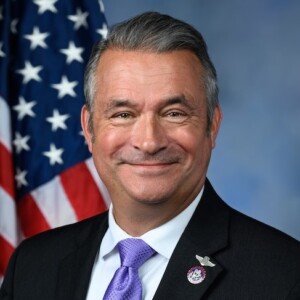CSI & Keystone Policy Center Release New Study on the Denver School of Science & Technology (DSST)
Today, Common Sense Institute (CSI) and the Keystone Policy Center released Higher Education Launchpad: The Postsecondary Results of the DSST Public School Model.
Founded in 2004, DSST, the Denver School of Science & Technology, is nationally renowned for its unique design, diversity, and consistent high achievement. It is considered one of the leading open enrollment STEM (science, technology, engineering, and math) schools in the United States. DSST has grown to a multi-school network under a charter management organization. DSST serves 7,400 students across eight middle schools and eight high schools.
“In short, DPS schools would more than double their postsecondary education attainment if they had the performance rates of DSST,” said CSI Education Fellow and co-author of the study, Jason Gaulden.
The report sheds light on the performance of DSST schools compared to Denver Public Schools in terms of graduation, postsecondary attainment, and economic consequence. The analysis provides insights into the data that makes DSST so unique in its success and service to students and reveals a high correlation between attending a DSST high school and having high college matriculation, attainment, and completion rates.
“The latest available data on postsecondary outcomes from Denver public high schools shows that DSST schools stand out,” said Van Schoales, Senior Policy Director at the Keystone Policy Center. “1 in 10 credential attainers from Denver public high school’s 2016 class graduated from a DSST school, while DSST accounted for just 1 of every 25 high school seniors.”
CSI Executive Director Kelly Caufield added, “The success of DSST students will have long-term, positive implications for not only for their earning power and socioeconomic growth but for generations to come.”
Among the key findings:
- DSST Montview High School’s postsecondary credential attainment was three times the district average. At 51%, DSST Montview High School had the highest rate of students earning a postsecondary credential within six years of graduating among all 45 Denver Public Schools. DSST Green Valley High School had the eighth-highest rate among all district high schools at 29%. The overall DPS average rate, inclusive of DSST schools, was 17%. Given DSST outperformed the district average, if their results were excluded, the difference between DSST schools and non-schools would be even greater.
- 21% of DSST Montview High School and 19% of DSST Green Valley Ranch High School lower income students from the 2016 graduating class earned some form of postsecondary education by 2022, more than doubling the DPS average of 8% for all lower income students.
- 1 in 10 credential attainers from Denver public high school’s 2016 class graduated from a DSST school, while DSST accounted for just 1 of every 25 high school seniors. Given the school’s higher-than-average graduation rates and postsecondary credential attainment rates, they accounted for 9.6% of all postsecondary credentials by 2022. DSST Montview and DSST Green Valley High Schools’ lower income student population accounted for 3.6% of the district population yet were 11% of postsecondary credential attainers.
- 133% increase in the number of students who earned some form of post-secondary credential, if DPS achieved DSST rates.
- The net increase in annual earnings of the 2016 DPS graduating class reaching DSST achievement rates, including 1,109 new postsecondary attainers, would be $38,000,000, or $1.5 billion in net lifetime earnings. The average difference in lifetime earnings for a student who does not graduate high school, compared to a student that receives a 4-year degree is $1.34 million.
- DSST schools serve a diverse student body. Nearly all DSST’s Denver schools have higher rates of students receiving free and reduced lunch than the district average. Most of their schools also educate higher rates of minority students—specifically Black or African American and Hispanic or Latino students—than the district average.
- Graduation rates across DSST high schools show similar outperformance when compared to the district average. All six DSST high schools with a graduating class outperformed the district average 2023 graduation rate of all students. Groups with large enough sample sizes also outperformed the district average including lower income students, Black or African American students, and Hispanic or Latino students.









